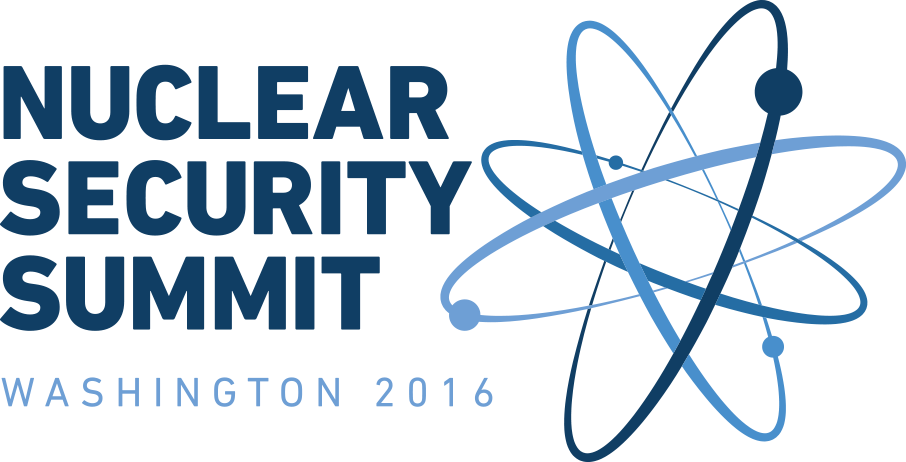National Statement: Ukraine
/NSS 2016 Statement on the Threats posed by the Aggression of the Russian Federation against Ukraine and Nuclear Militarization of Crimea to Safety and Security of Nuclear Sites and Material of Ukraine
Ukraine confirms its firm adherence to the NSS community goals and principles. We remain fully committed to implementing further joint efforts to promote stable and strong international nuclear security system.
Ukraine, which abandoned its nuclear arsenal in 1994, has been always devoted to finding peaceful solutions to the existing security threats and challenges supporting the international efforts aimed at achieving the universal disarmament goals. In 1994 Ukraine signed Budapest Memorandum on Security Assurances with Regard to Ukraine’s Joining the NPT as a Non-nuclear State. Since 2014 the Memorandum has been meanly violated with impunity by one of its guarantors and thus became senseless for the other parties to this document.
In 2010, at the first Nuclear Security Summit Ukraine took another cornerstone decision – to remove its stocks of highly enriched uranium (HEU) and responsibly and timely implemented its obligations by the 2012 Seoul Nuclear Security Summit. In this regard, we are grateful to our U.S. partners who fully supported us in this endeavor and provided the relevant technical assistance. We also highly appreciate the assistance of the United States in completion of the construction of Neutron Facility in Ukraine.
During the 2014 Hague Nuclear Security Summit, we appealed to the NSS community to apply pressure on the Russian Federation (then a member of this forum) and persuade it to withdraw its armed forces from the territory of Ukraine, namely the Autonomous Republic of Crimea. We were insisting that Russia’s behavior constituted a real threat to the nuclear security, particularly to the Ukrainian research nuclear facilities in Crimea.
Unfortunately, the Russian Federation did not only stop its illegal actions in Crimea, but moved further by sending its troops to Donetsk and Luhansk regions and fueling terrorist actions against Ukraine.
Undermining the UN-based security system by violating the UN Charter and provisions of the Non-Proliferation Treaty (NPT), breaching the IAEA Safeguards’ application regime, providing shelter to criminals wanted by Interpol and supporting terrorists, the Russian Federation eventually took logical decision to leave NSS process.
This fact is a real evidence that the NSS goals and principles to be onwards implemented in the framework of UN, IAEA, GP, Interpol and Global Initiative to Combat Nuclear Terrorism (GICNT) as well as commitments taken by all of us in 2010, 2012 and 2014 are not recognized by the Russian Federation any more.
On this background the Russian Federation is declaring its rights to deploy nuclear weapons on the Ukrainian territory, namely in Crimea. Russian occupants are thoroughly restoring soviet-era nuclear storage facilities and have already deployed at the occupied territories of Ukraine the means of nuclear weapons delivery, like warships and combat aircraft. To facilitate this activity Russia is likely to install uranium enrichment facilities, organize production of dual use materials and apply technologies linked to the nuclear weapons on the peninsula.
The occupation of the Autonomous Republic of Crimea and ongoing Russian aggression in the east of Ukraine have left without due control of the Ukrainian national regulator LEU research reactor in Sevastopol, 2 nuclear repositories and more than 1200 radionuclide sources in Crimea, as well as 277 in certain areas of Donetsk and Luhansk regions, 65 and 53 sites using the sources of ionizing radiation respectively.
In such circumstances we cannot exclude the illicit trafficking and malicious use of these sources and could even tackle the threats posed by eventual smuggling of HEU to and from the occupied Ukraine's Crimea.
For example, in July 2015 the Security Service of Ukraine discovered that Luhansk-based terrorists sold out a number of sources of ionizing radiation from the occupied coal mine in Luhansk region, which was lately found in the populated area in Donetsk region.
As a result of the Russian aggression, Ukraine cannot resume control over more than 400 kilometers of its border. These sections of the border can be used by traffickers to illegally transfer to Ukraine and further to Europe radiation sources from Russia. The recent reports of the Ukrainian law enforcement agencies demonstrate that this is a real scenario. Just recently, in March 2016, the Security Service of Ukraine intercepted in Zaporizhia region three sources of ionized radiation, which, allegedly, arrived to Ukraine through the uncontrolled sections of the Ukraine-Russia border.
In this regard, we underscore the need for continued efforts by the NSS participating states to strengthen nuclear security to prevent terrorists, criminals and all other illegal armed groups from acquiring nuclear and other radioactive material, especially when such material is placed at risk by conflict or unrest.
We count on the firm support of the international community in ensuring territorial integrity of Ukraine within its internationally recognized borders with a view to stop nuclear proliferation and mitigate threats emerging from the Russian aggression.
Ukraine welcomes the unequivocal decision of the IAEA to apply safeguards to all nuclear sites and material on the whole territory of Ukraine, including those located on the occupied territories, in conformity with the international law and relevant agreements between Ukraine and the Agency.
Ukraine fully supports the Action Plans for UN, IAEA, INTERPOL, Global Partnership and GICNT aimed at advancement of the principles and goals of nuclear security summits beyond 2016. The guidelines for the States and international organizations embedded in these documents should mitigate the consequences and roots of weakened nuclear safety and security architecture at the conflict areas.

